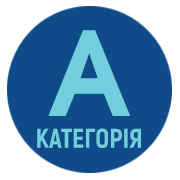EXPERIMENTAL SUBSTANTIATIONS OF THE MAXIMUM PERMISSIBLE CONCENTRATION OF THE NEW FLUTOLANIL BENZAMIDE FUNGICIDE IN WATER BODIES
DOI:
https://doi.org/10.32782/2226-2008-2023-2-1Keywords:
fungicide, general sanitary regime of water bodies, nitrogen-containing compounds, dissolved oxygen, active reaction of waterAbstract
During the registration of chemical preparations with new active substances, it is necessary to conduct thorough research on their impact on the general sanitary regime of water bodies. The aim of the study. In the article we raised a question of the relevance of the hygienic approach to the assessment of the flutolanil based fungicide application safety to human and environment and its effect on the sanitary regime of water bodies for domestic and drinking, cultural and household purposes. Materials and methods. Hygienic studies of the flutolanil influence on the processes, taking place in water of the model water bodies, were carried out. The amount of studied active substance, affecting organoleptic properties, the biochemical oxygen consumption, the dynamics of the saprophyte microflora, the nitrogen content of ammonia, the nitrogen of nitrites and nitrates, was determined, as well as the content of dissolved oxygen in water and the active reaction of water (pH). The sanitary-toxicological index of hazard was calculated. Statistical calculations of the arithmetic mean, the error of mean and significant difference between the means were also performed. As a result of the conducted studies, it was established that concentration of flutolanil in water bodies at 0,001 mg/dm3 is the threshold by the organoleptic and by general sanitary index of hazard (according to the sanitary-toxicological indicator index of hazard is 0,06 mg/dm3). Conclusions. It was substantiated the maximum permissible concentration of flutolanil in water for domestic and drinking, cultural and household purposes – 0,001 mg/dm3 (the limiting index based on organoleptic and general sanitary indices of hazard). It is perspective to use the obtained results to predict the danger of deterioration of the sanitary condition of water bodies due to using compounds of the benzamide class.
The article is available at the Institutional Repository of Odesa National Medical University http://journal.odmu.edu.ua/?p=7559&lang=en
References
Storchous IM. Reduction of pesticide side effects on crops (according to the online journal Agronom from November 9, 2017). [Internet]. [cited 2023 Feb 20]. Available from: https://agronom.com.ua/zmenshennya-pobichnogo-vplyvupestytsydiv-na-kultury/.
Khyzhniak SV, Voytsitskyi VM, Danchuk VV, Midyk SV, Laposha OA, Ushkalov VO. Pathways of migration of persistent pesticides through trophic chains of terrestrial and aquatic ecosystems. Biosystems and Natural Resources. 2018;10(1-2):36-43. [Internet]. [cited 2023 Feb 20]. Available from: http://journals.nubip.edu.ua/index.php/Bio/article/download/10280/9060.
Kolesnyk NL. Toxic impact of pesticides on biota of freshwater bodies (review). Fisheries Science of Ukraine. 2015;(4):31-53. doi: 10.15407/fsu2015.04.031. [Internet]. [cited 2023 Feb 20]. Available from: http://nbuv.gov.ua/UJRN/rnu_2015_4_5.
Ivankiv M, Vovk S, Marcynovskyi V. Features of negative impact of organochlorine pesticides on environment. Bulletin of Lviv National Agrarian University. Series: Agronomy. Lviv. 2013;17(1):44-48. [Internet]. [cited 2023 Feb 20]. Available from: http://nbuv.gov.ua/UJRN/Vlnau_act_2013_17(1)__10.
Oliynyk MS. “Vykorystannia pestitsydiv i ahrokhimikativ u silskomu hospodarstvi: pravovi problemy”//Materialy VIII Miedzynarodowej naulowi-praktyczney konferencij “Naukova przestrzen Europy – 2012” Volume 26. Pravo.: Przemysl. Nauka i studia – 104 p. – p. 15–17.
Derzhprodspozhyvsluzhba. “Pro kontrol za stanom vodopostachannia, vodovidvedennia ta dotrymanniam pokaznykiv bezpechnosti ta yakosti pitnoi vody u 2021 rotsi”. January 10, 2022. URL: https://dpss.gov.ua/news/pro-kontrol-zastanom-vodopostachannya-vodovidvedennya-ta-dotrimannyam-pokaznikiv-bezpechnosti-ta-yakosti-pitnoyi-vodi-u-2021-roci#mainContent (accessed February 20, 2023).
Slovo i Dilo. “Tsentralne vodopostachannia Ukrainy: skilky merezh perebuvaie v avarijnomu stanі”. Infographic based on the concept of the General Targeted Social Program "Pytna voda Ukrainy" for 2022-2026 as of June 11, 2021. URL: https://www.slovoidilo.ua/2021/06/11/infografika/suspilstvo/centralne-vodopostachannya-ukrayiny-skilky-merezh-perebuvayeavarijnomu-stani (accessed February 20, 2023).
Verkhovna Rada of Ukraine. “Pro ratyfikatsiiu Stokholmskoi konventsii pro stiiki orhanichni zabrudniuvachi: Zakon Ukrainy vid 18.04.2007 r. № 949-V”. Visnyk Verkhovnoi Rady Ukrainy. 2007. No. 30, art. 396. URL: http://zakon.rada.gov.ua/laws/show/995_a07 (accessed February 20, 2023).
Methodical instructions for determining flutolanil in water by gas-liquid chromatography. No. 1776-2021. Approved by the order of the Ministry of Environmental Protection and Natural Resources of Ukraine, 21.10.2021, No. 682.
On amendments to the Hygienic Norms and Regulations for the safe use of pesticides and agrochemicals. Approved by the order of the Ministry of Health of Ukraine, 02.02.2016, No. 55, registered in the Ministry of Justice of Ukraine on 10.02.2016, No. 207/28337 (as amended by the order of 28.05.2020, No. 1276). Official Bulletin of Ukraine. 2022.
Methodological instructions for the hygienic assessment of new pesticides: MU No. 4263-87. [Approved 13.03.87]. 1988. 210 p.
Conclusion regarding the peer review of the pesticide risk assessment of the active substance flutolanil. EFSA Scientific Report (2008) 126, 63 p. URL: https://efsa.onlinelibrary.wiley.com/doi/epdf/10.2903/j.efsa.2008.126r (accessed February 20, 2023).
Guidelines for Drinking-Water Quality. Second Edition. Geneva: World Health Organization, 1993. Vol.1; 1996. Vol. 2; 1997. Vol. 3.
Permissible Concentrations (PC) and Indicative Allowable Levels (IAL) of Harmful Substances in Water Bodies of Drinking and Cultural and Domestic Water Use № 6025-91 dated 21.10.91. URL: http://zakon.rada.gov.ua/laws/show/v6025400-91 (accessed: 20.02.2023).
Prokopov V.O. Drinking water of Ukraine: medical-ecological and sanitary-hygienic aspects: monograph / V.O. Prokopov; edited by A.M. Serdyuk. Kyiv : VSV "Medicine", 2016. 400 p.






